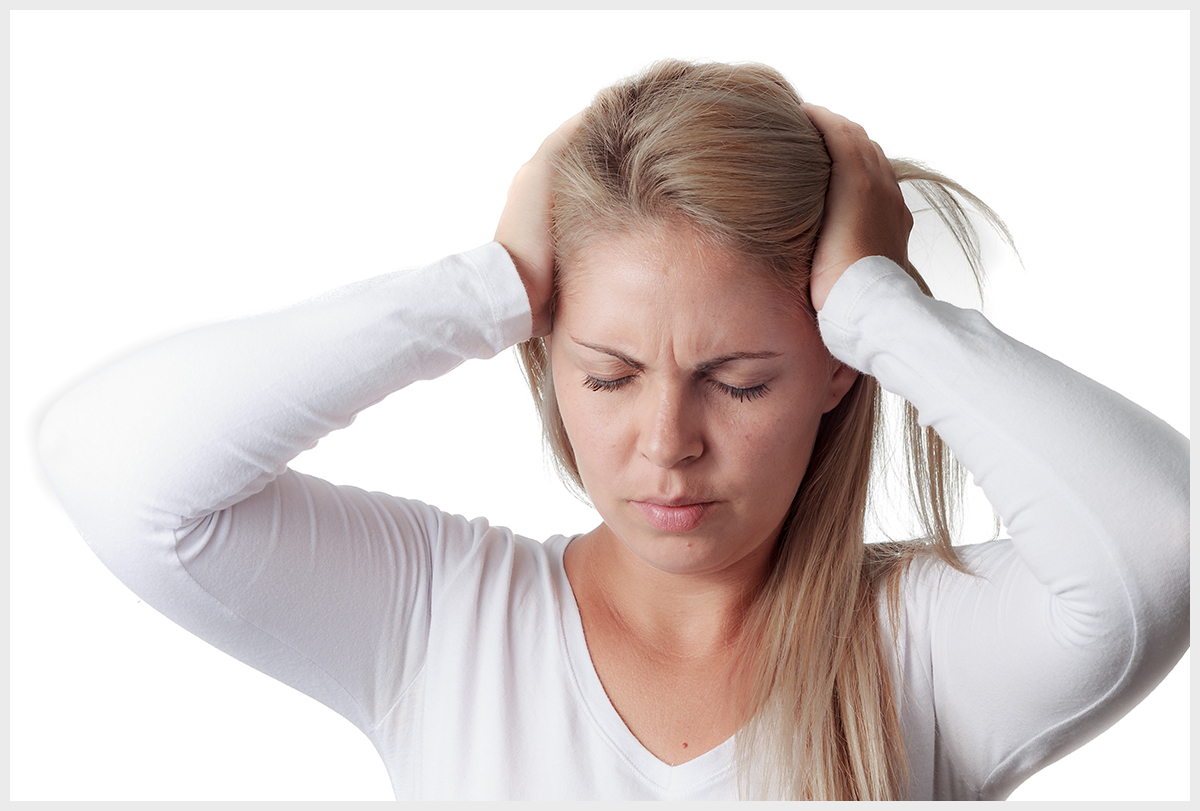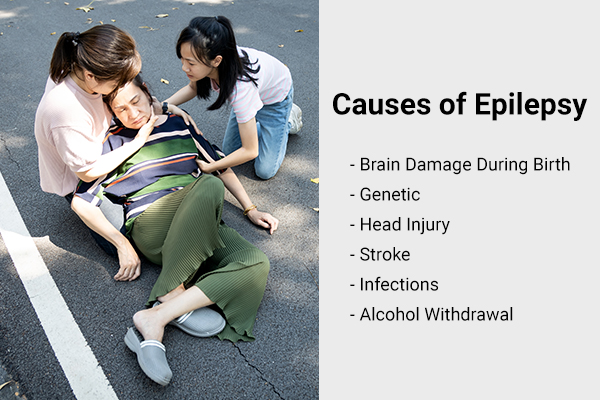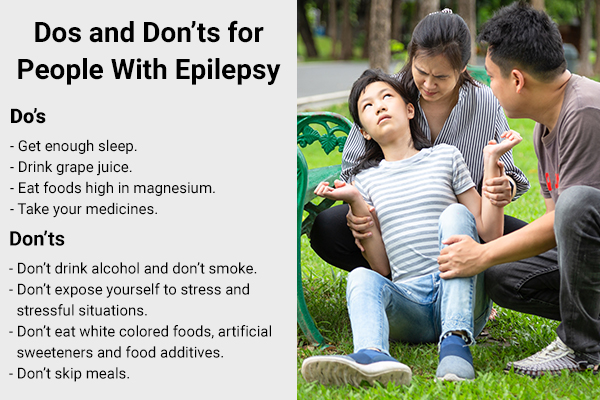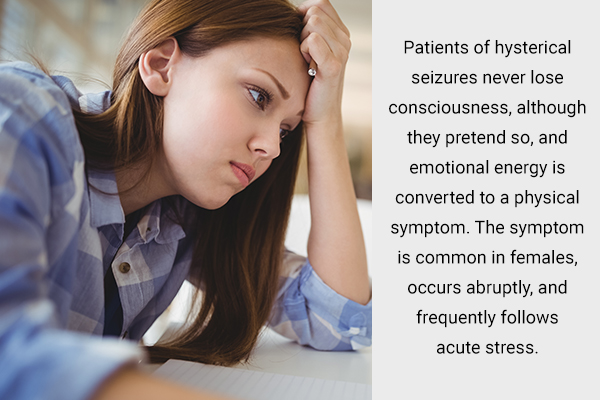In this article:
Epilepsy is a neurological disorder characterized by seizures or fits. According to the World Health Organization (WHO) estimates globally, more than 70 million people are afflicted by this disorder. (1)

The seizures occur due to bursts of electrical activity in the brain, impairing the permeability of ions in the neurons.
Two neurotransmitters have been implicated so far in epileptic seizures. These are gamma amino butyric acid (GABA), an inhibitory neurotransmitter, and glutamate an excitatory neurotransmitter. (1)
Epilepsy is also known as seizure disorder.
Ways to Deal With Epilepsy
Many people with epilepsy turn to alternative treatment options either alone or in combination with conventional medication. Quite a few alternative treatment options are available, and these include herbal supplements, biofeedback, acupuncture, yoga, and breathing exercises.
The different treatment options for epilepsy include the following.
1. Medications can help
Doctors use anti-epileptic drugs (AED) to control convulsions. Most AEDs function by affecting the levels of GABA in the brain or inhibiting the channels through which sodium, potassium, or chloride ions are transported into the brain.
It is desirable that the AED suppresses all seizures without causing adverse effects. However, currently available AEDs not only fail to control seizure activity in some patients but also frequently produce adverse effects such as impairment of CNS function and death due to aplastic anemia or hepatic failure. (2)
Attempts of developing safer agents of equivalent or superior efficacy continue, and on the market, such AEDs are available and can be prescribed by specialist doctors.
AED does not cure epilepsy but can only stop seizures from happening, just like medicines for diabetes and hypertension.
2. Try acupuncture
Recent clinical studies have shown that acupuncture relieves epileptic symptoms. Improvements can be seen in EEG results and can lead to decreased seizure frequency, short attack episodes, functional recovery, and improvement in quality of life. (3)
3. Use herbal remedies

Many herbal remedies have cultural roots in many countries, such as Chinese herbal medicines in China, Ayurveda in India, “Kampo” medicine in Japan, traditional Iranian medicine (TIM) in Iran, and homeopathy in European countries.
a. Chinese herbal medicine
One study revealed that the Chinese herbal medicines Qingyangsen and Zhenxianling were used in combination with allopathic AEDs on epileptic patients. The results were encouraging, and it may be concluded that Chinese herbal medicines have anticonvulsant activity. (4)
Some other plants such as potato orchid (Gastrodia elata) and cat’s claw herb (Uncaria rhynchophylla) are used in combination with traditional Chinese medicine to treat convulsions. (5)
A pill called Dianxianning Pian produced by the Chinese medicine factory of China contains a combination of various herbs including spikenard or sugandhbala in Hindi (Valeriana jatamansi), sweet flag (Acorus tatarinowii), cat’s claw herb (Uncaria rhynchophylla), and Japanese morning glory (Pharbitis nil) has been shown to control the frequency and severity of epilepsy. (5)
b. Kampo medicine
The most common and important Kampo medicine is TJ-960, which is a mixture of nine herbal drugs. A recent study has shown that TJ-960 improved cognitive function in patients with epilepsy, in addition to improving seizure control. (5)
c. Ayurveda
In the traditional Indian medical system of Ayurveda, ashwagandha, brahmirasayan, and brahmigritham have been used for centuries to control seizures. (6) In current Indian medical practice, BR-16A (Mentat) is used in combination with AEDs. (4)
Besides these herbs, many other products derived from plants have been reported to have anticonvulsant (to treat seizure) activity. But more research is needed to substantiate these claims.
d. Traditional Iranian medicine
Plants mentioned in TIM, such as pellitory or Spanish chamomile (Anacyclus pyrethrum), aniseed (Pimpinella anisum), black cumin (Nigella sativa), and galbanum (Ferula gummosa), have proven anticonvulsant effect and have been used traditionally to treat epilepsy. (7)
e. Homeopathy
Homeopathic treatment for epilepsy using drugs such as Cicuta virosa (8) and Nux vomica (9) has been shown to be effective in reducing seizures in animal models of epilepsy.
Note: Although some herbs may help with epilepsy, some may worsen the symptoms. Hence, consult your doctor before taking any herbal medicines for epilepsy.
4. Vitamins supplements/diet

Some vitamins may help in reducing the number of seizures. But just taking the vitamins is not enough; they should be combined with proper medication.
a. Vitamin B6
Vitamin B6 (pyridoxine) is used in the treatment of a rare form of epilepsy called pyridoxine-dependent epilepsy, which occurs due to the inability of the body to metabolize vitamin B6. This type of epilepsy develops in the womb or soon after birth. (10)
b. Folate
A folate deficiency in the cerebrum of some infants may result in seizures, which respond to treatment with folate supplements. (10)
c. Vitamin B12
Vitamin B12, in combination with anti-epileptic drugs, has been shown to be effective in the treatment of epilepsy after a stroke. (11)
d. Other vitamins
Other vitamin deficiencies in patients with epileptic include deficiencies of vitamin D, vitamin E, and biotin. These deficiencies may be caused by the use of certain medications or other factors.
Do consult your doctor before taking any vitamin supplements. (10)
e. Ketogenic diet
The ketogenic diet (KD) and its modifications, such as the modified Atkins diet (MAD), have been used successfully to treat drug-resistant epilepsy. (12)
Ketogenic diet is essentially a high-fat, low-carbohydrate, and low-protein diet that stimulates the state of starvation. This alters the metabolism of the liver and brain, resulting in anti-convulsant properties.
Ketogenic diet essentially allows the following foods: (13)
- Fruits and vegetables such as avocados, berries, spinach, zucchini, cauliflower, broccoli, and green beans.
- Dairy products such as cottage cheese, butter, plain yogurt, and sour cream.
- Meat and fish such as beef, pork, salmon, sardines, eggs, turkey, and chicken.
- Miscellaneous food items such as nuts and seeds, dark chocolate, unsweetened tea and coffee, and unsweetened plant-based milk.
5. Do yoga
Many yogic postures such as Balasana (child pose), Kapotasana (pigeon pose), Shirasasana (headstand), and Kamatkarasana (wild thing) coupled with breathing exercises have been used in the management of epilepsy.
In a study conducted on patients with epilepsy, nearly one-third (33.7%) of the participants reported that yoga is beneficial in managing epilepsy. (14)
What Causes Epilepsy?

The cause of any epileptic seizure is an imbalance in the levels of certain brain chemicals. (1) This imbalance may be due to any of the following reasons: (15)
- Brain damage during birth: This could be caused by an inadequate supply of oxygen to the brain during birth.
- Genetic: Alterations in one or many genes involved in the transmission of nerve impulses may lead to epilepsy. There is a strong possibility of a family history of epileptic seizures.
- Head injury: A severe head injury, usually injuries accompanied by bleeding from the brain, may affect the balance of brain chemicals, resulting in epilepsy. (16)
- Stroke: A stroke, which restricts the supply of oxygen to the brain, can result in epileptic seizures.
- Infections: An infection of the brain such as meningitis, encephalitis or neurocysticercosis, malaria, and tuberculosis can lead to epileptic seizures. (17)
- Alcohol withdrawal (18)
- AIDS through direct infection by the virus. (19)
- Brain tumors (2)
- Severe liver or kidney disease
Classification of Epileptic Seizures
Epileptic seizures may be classified into focal, generalized, and unknown, depending upon how they affect the brain. (20)
In the focal type of seizure, only a certain part of the brain is affected. There is muscle twitching or jerking, waves of hot and cold, and repeated movements such as clapping and chewing.
In the generalized type of seizure, both the left and right sides of the brain are affected. There may be whole-body spasms, tense rigid muscles, staring into space, a sudden stop in movement, and fluttering eyelids. (20)
Generalized epilepsy usually starts in childhood and is sometimes seen in adults. In the unknown type of seizure, as the name suggests, doctors are unable to pinpoint where the seizure originates. The term “grand mal” seizure is used to describe this type of epilepsy. It is characterized by stiffening and loss of consciousness, a bluish face, and loss of bladder and bowel control. (20)
Diagnosing Seizures
Seizures can result in certain medical conditions such as infection, fever, and abnormal blood sugar, in which case the diagnosis is not epilepsy.
To qualify as an epileptic seizure, the seizure should be unprovoked. Doctors then make the diagnosis of epilepsy by doing an EEG (electroencephalogram), blood tests, and brain imaging scans such as a CT scan or MRI. (20)
Experts suggest that it’s still possible you have epilepsy even if these tests do not show anything, and you may be diagnosed just based on your symptoms.
Additional Tips That May Help
Experts suggest these tips:
- Epilepsy is a long-term illness and needs medication for years. Never start or stop medicine on your own.
- Try to live a normal life. People with epilepsy can marry, have children, and fit in most jobs.
- Get regular good-quality sleep.
- Eat regular meals. NEVER remain hungry.
- Avoid extremely tiring physical exercises.
- Do not drive alone or swim alone.
What Are the Dos and Don’ts for People With Epilepsy?

Do’s
- Get enough sleep as lack of sleep can trigger seizures.
- Drink grape juice regularly.
- Eat foods high in magnesium since a deficiency of magnesium can trigger seizures.
- Take your medicines regularly as prescribed.
Don’ts
- Don’t drink alcohol and don’t smoke.
- Don’t expose yourself to stress and stressful situations.
- Don’t eat white-colored foods, artificial sweeteners, and food additives.
- Don’t skip meals.
Most-Asked Questions About Epilepsy
Can surgery help in curing epilepsy?
Brain surgery can help in curing some types of epilepsy. In focal epilepsy, the removal of part of the temporal lobe is useful.
Surgery to remove part of the brain may be an option if your seizures are not being controlled by AEDs, and tests show that a problem in a small part of your brain can be removed without causing serious effects. In these cases, it is possible for the seizures to stop completely after surgery.
Why is a ketogenic diet recommended for epilepsy?
A ketogenic diet provides ketone bodies instead of glucose as fuel. This shift in metabolism slows energy availability, resulting in reduced seizures.
Is epilepsy a mental illness similar to depression or anxiety?
Epilepsy is not a mental illness similar to depression or anxiety. Many cultures consider epilepsy as being caused by supernatural forces or black magic.
However, it is common that, due to constant stress, the patient may develop secondary depression.
What is the difference between fainting and epilepsy?
- A seizure starts suddenly, whereas fainting is gradual.
- Jerky movements are rare in fainting but common in seizures.
- Biting one’s tongue, frothing from the mouth, and passing urine are only seen in seizures, not in fainting.
- People recover quickly after a faint, but in seizures, they will be drowsy or complain of a headache.
What is the difference between a hysterical seizure (hysteria) and epilepsy?

Tongue bite, frothing, and passing of urine are only seen in epilepsy and not in hysterical seizures.
Patients with hysterical seizures never lose consciousness, although they pretend so, and emotional energy is converted to a physical symptom. The symptom is common in females, occurs abruptly, and frequently follows acute stress.
Hysterical seizures are usually seen first during adolescence or in the 20s. As a result, the patients often have associated moderate anxiety and depression.
What to do in an epileptic seizure before medical help arrives?
- Turn the patient on their side.
- Do not force any object into the mouth.
- Do not force the patient to take water.
When should I know that a seizure is an emergency condition?
Status epilepticus is a neurological emergency requiring immediate evaluation and management to prevent significant morbidity or mortality.
Previously, status epilepticus was defined as a seizure with a duration equal to or greater than 30 minutes or a series of seizures in which the patient does not regain normal mental status between seizures. (21)
Final Word
Epilepsy is a severe, neurological disease that affects millions of people across the world. Different treatment methods work for different people, and there is no single treatment or alternative remedy that will work for everyone.
Your doctor is your best source of epilepsy information and care. Herbal treatments, coupled with dietary modifications and exercise, may complement your medical treatment.
- Was this article helpful?
- YES, THANKS!NOT REALLY


